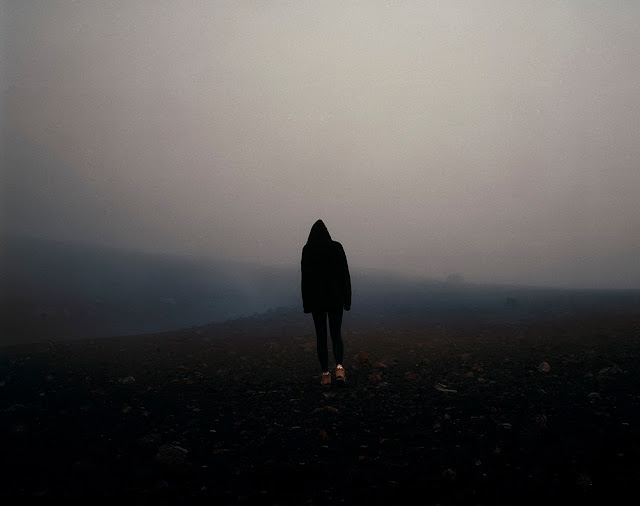Montréal, Canada
You’re a storyteller, and use (almost!) everything perceptible to
express and recount past events and to recreate memories. In this endeavour I
feel that your work, in its entirety, is very personal; would you say that you
not only create, but also really ‘live' your art/work?
I’m obsessed with remembering. When I am
witnessing something that interests my curiosity I get this strong urge to
document it. It can be a really good story being told, or an absurd scene on
the street, or someone that I connect with (even though I just met them). For
as long as I remember I’ve had this obsession, I just didn’t have the tools to
capture them. For a while it was photography, then writing, then both, and now
it is mainly sound and video. I believe that life should inspire art but life
can also be the art.
Is it a goal of yours to try to capture moments and atmospheres as
completely as possible? How much of it would you say is or could be conscious
interpretation?
There is a certain sense of a place that I
try to capture with my images (still or moving). With Nocturne it was about creating an
image that reminded me of landscape of New Mexico. Growing up there I had heard
countless stories of ghosts, aliens, and shape-shifters and their myth haunted
the landscape. With ALOHA the atmosphere is being used to complicate a
Western perspective of Hawai’i (a paradise for tourists). It will never be
complete as all images fail to give us something real, something alive, and
able to change. Motion picture is able to bring us closer to reality but in
turn it replaces one reality for another (a filmic reality).
How do your projects come into being? Do they start with an idea, a
photograph, a quote …?
They often start with a story or situation
and they develop as an investigation. ALOHA came out of my time spent in
Hawai’i and some of the stories I heard from there. It turn those stories
became what I know of Hawai’i, and so I felt compelled to use those stories for
the conceptual framework of the body of work.
With Proof of Existence it started off as a trip to China and how
I wanted to create images I haven’t already seen of China from the numerous
photo essays about that place and its situation. In turn it became a story
about my father realizing he was a tourist in a place he was exiled from so
many years ago.
In teamwork, which is the position you find yourself assuming most of
the times?
I’m terrible at following and I feel
uncomfortable with leading. So often I just go my own way. I believe a good
collaboration is between individuals who have their own thing that they do and
how those things that they do come together. Both have to share the same
intentions and believe in each other beyond just their practice.
How has being on the road while growing up shaped you?
I think my friends find me a bit strange and
eccentric and it comes from having lived in very different places where what is
normal to some is strange to others. My life in New Mexico is where the artist
in me came into being, and like my current muse, Hawai’i, it is a place where
oral tradition is a central part of the culture.
What is more important to you personally: stability or movement? Why?
Definitely movement. I have no idea what
stability is, and I recently moved out of a city I had been living in for 11
years (the longest place I ever lived in) because I started to feel
claustrophobic. I wouldn’t call myself a world traveller, I like to move around
and experience different places, but I’m more interested in gaining new
perspective (which I believe comes from staying somewhere for more than just a
visit).
Is there a person who you feel is, physically or mentally, always by
your side?
I know little of things that last the test
of time, such as friends that I have said goodbye and that there wasn’t some
distance as a result. My best friend, Faye, is someone I think about everyday since
the first time I saw her. I like to joke to her about how we are stuck with
each other, that even if we grew tired of each other, we will always been
strongly connected. I have never felt that with anyone else, and though I am
too young and inexperienced in whatever amount of life that I have I feel that
I will never have that with another soul.
I noticed that in the stories you share on your blog, you never give any
names for the persons described. Is there a reason for this?
Those stories function similarly to a
journal but they are on the internet and they are being shared. It is no longer
about them or even me at that point, it is about communication. It is like
communicating with smoke signals: you are writing a message in the sky for all
to see and people just see the message but never the person writing it.
What are you working on currently?
ALOHA is my primary focus, I hope to work on that
project for the rest of my life as I will always have a strong connection to
Hawai’i. I’m in Montreal at the moment and I started a documentary on an urban
dance movement called, “urb.SURF”. And every once in a while I update 2011’s We
Soon Be Nigh! with new work.
Who is or are your favourite storytellers?
Hayao Miyazaki, Haruki Murakami, Omer Fast,
and Duncan Trussell.
(p.s. Be sure to take a look at his website, and take in all pictures, videos and sounds to full extend.)






















































